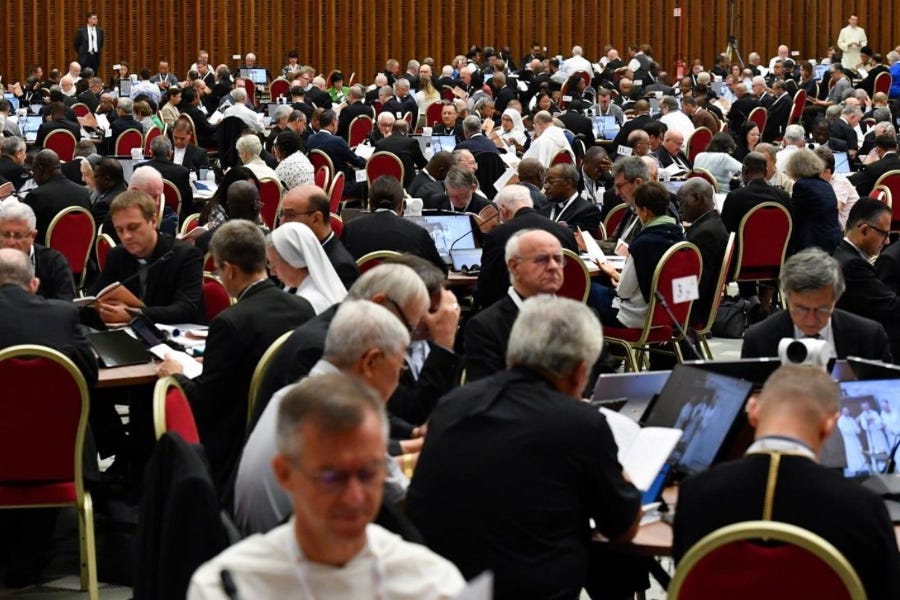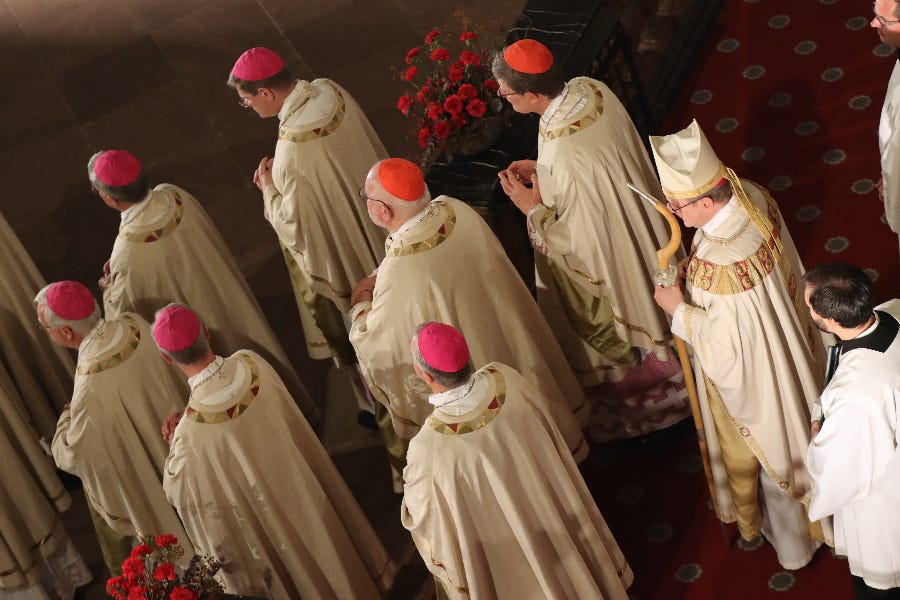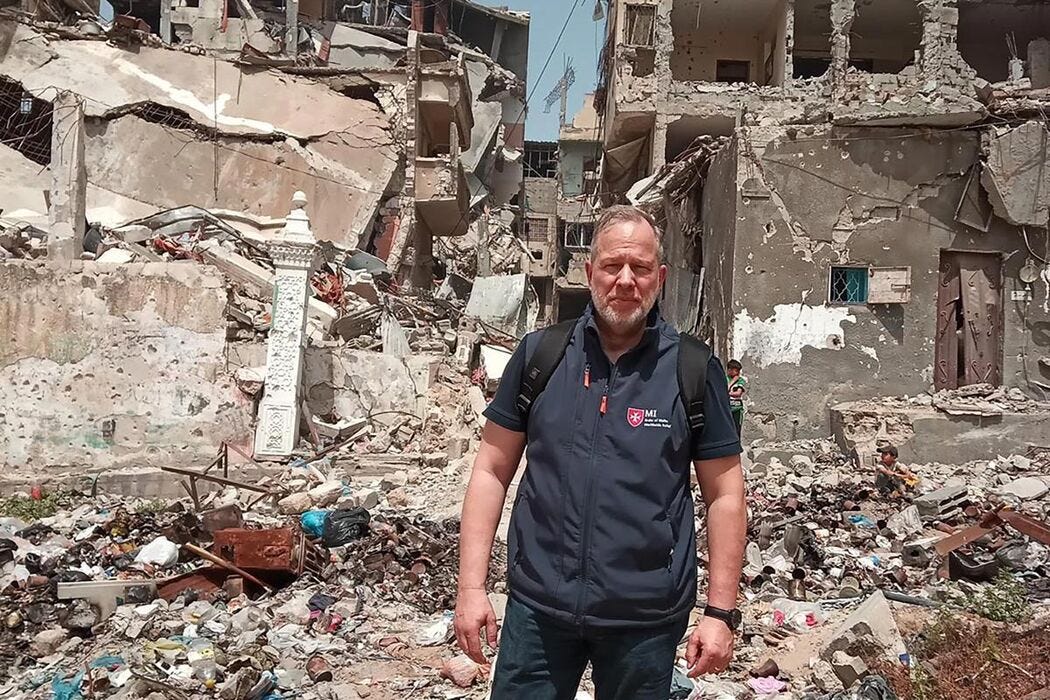When organizers published a list of participants in October’s session of the synod on synodality last week, it seemed to contain few surprises.
They had already made clear by the end of the first session, in October 2023, that the participants list would be essentially the same at the second assembly.
And so it largely proved. At a Sept.16 press conference unveiling the new list, the synod on synodality’s general rapporteur Cardinal Jean-Claude Hollerich noted that among the 358 members attending the second session, there were “only 25 changes,” who were “mostly replacements.”
He acknowledged “there were a few substitutions” among delegations representing the world’s bishops’ conferences.
For example, the U.S. bishops’ conference delegation now has Baltimore’s Archbishop William Lori in place of New York’s Cardinal Timothy Dolan, who attended the 2023 session. According to reports, Lori was previously elected to the U.S. delegation but was unable to participate in the first session.
Similarly, the Nigerian bishops’ conference delegation had one change, with Sokoto’s Bishop Matthew Hassan Kukah replacing Owerri’s Archbishop Lucius Iwejuru Ugorji.
So far, so cosmetic. But observers soon noticed that Poland — one of the world’s most influential Catholic countries — has completely overhauled its bishops’ conference delegation.
What’s changed
In 2023, the Polish bishops’ conference sent the following delegates:
Archbishop Stanisław Gądecki of Poznań, the then Polish bishops’ conference president.
In 2024, the conference is sending:
Bishop Sławomir Oder of Gliwice, a canon lawyer who served as postulator for Pope John Paul II’s cause.
Bishop Jacek Grzybowski, auxiliary of Warsaw-Praga.
Three other Poles are attending both sessions, as papal nominees:
Cardinal Konrad Krajewski, the papal almoner.
Aleksander Bańka, a lay Catholic philosopher.
Other Polish-born participants include:
Bishop Dariusz Kałuża, M.S.F., the Bishop of Bougainville, representing Papua New Guinea and Solomon Islands.
Bishop Radoslaw Zmitrowicz, O.M.I., auxiliary bishop of Kamyanets-Podilskyi, Ukraine, a papal appointee.
Julia Osęka, a student at Saint Joseph’s University in Philadelphia, representing North America.
Why has the Polish bishops’ conference delegation changed? Before tackling that, a little background is necessary.
Poland and Germany
Both Gądecki and Jędraszewski were nearing the typical episcopal retirement age of 75 when they packed their bags for the synod on synodality’s first session in October 2023. They were perceived as considerably less enthusiastic about the global synodal process than Galbas, who oversaw the initiative’s initial stage in Poland.
After the first session ended in Rome, Gądecki gave a interview expressing alarm about the synod’s trajectory. He said that while some participants had been called to address the whole three or four times, he was “not so lucky.”
According to Gądecki, German bishops’ conference chairman Bishop Georg Bätzing had claimed that all the demands of Germany’s controversial “synodal way” had been incorporated into the synod’s draft final document.
“So, there is a risk that the synod fathers, by voting on the final document next year, will in fact approve the demands of the Synodale Weg, albeit with a slightly different wording,” Gądecki argued.
Shortly after the interview was published, it emerged that Gądecki had written to the pope during the first session expressing alarm that the German synodal way could shape the synod on synodality’s outcome.
What the synodal way was proposing, Gądecki wrote, “would not be an evangelical revolution, but rather one inspired by left-liberal ideologies.”
German bishops’ conference chairman Bishop Georg Bätzing hit back in a letter to Gądecki, accusing his Polish counterpart of “very unsynodal and unfraternal behavior.”
“I ask myself … under what right does the president of the bishops’ conference of a Church dare to judge the catholicity of another Church and its episcopate?” Bätzing reportedly wrote. “Let me therefore make it clear that I consider the archbishop’s letter to be a huge overstepping of his authority.”
Competing theories
In a 2,000-word analysis for the website Catolico, the journalist Tomasz Krzyżak noted the lack of any official explanation for the changes to Poland’s synod team.
A bishops’ conference spokesman noted only that the new trio were elected in a secret ballot at a plenary meeting of the bishops. The candidates were sent to the Vatican for approval, after which they were announced publicly by the General Secretariat of the Synod.
Krzyżak said that when Gądecki, Jędraszewski, and Galbas were asked why they weren’t attending the second session, only Galbas replied. The Katowice archbishop said the change “should be interpreted positively,” as it gave a larger number of bishops the chance to take part in the synod on synodaliy, smoothing the way for its fruitful reception in Poland.
Krzyżak considered two other possibilities:
1) Gądecki and Jędraszewski (74 and 75 respectively) bowed out for age reasons, while Galbas has a heavy workload in his archdiocese and can’t afford a month away.
2) Gądecki and Jędraszewski saw the direction the synod was heading and raised “the white flag.”
On the first point, Krzyżak noted there are plenty of other bishops at the synod over the retirement age. Spain’s three-man delegation, for example, includes the 80-year-old Archbishop Vicente Jiménez Zamora, the former Archbishop of Zaragoza.
Krzyżak suggested that, even if Gądecki and Jędraszewski were absent for age reasons, it was odd that the 56-year-old Galbas would miss the second session given his notable enthusiasm for the initiative, which exceeded that of most other Polish bishops.
On the second point, Krzyżak said that changes opposed by Gądecki and Jędraszewski were “in some areas probably inevitable.”
With no official clarification, the reasons for the Polish synodal makeover are likely to remain a mystery. But regardless of why, the Polish bishops will be sending a lower-profile delegation to next month’s synod session — a decision that could affect the meeting’s outcome.




